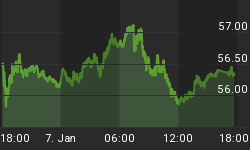Back in June of 2008, we wrote that the US stock market -- then at 1,377 on the S&P 500 -- was priced for poor returns. We were talking about prospective long-term returns, but as everyone knows, the market experienced an epic crash beginning just a few months later.
In late October, after the S&P 500 had plummeted more than 38% to under 849, we posted an update arguing that the US market was now priced for good (though not great) returns.
Well, we're here to tell you that the market is priced for poor returns once again.
Valuations Predict Both Reward and Risk
The following chart, described in detail in the first of the above articles but updated with new data here, displays the average 10-year returns that would have been experienced by investors buying the S&P 500 at different valuation levels over the hundred years leading up to 1999. (Beyond that, of course, we don't yet know what the 10-year returns will be). The chart makes it very clear that valuation is a fantastic predictor of average long-term returns.

Despite the mainstream view that you have to take more risk to get more reward, this next chart shows that, in fact, investors who bought during high-valuation periods experienced a very high risk of loss along with their lower rewards. The chance of losing money in inflation-adjusted terms, starting at an outright unacceptable 39% in the most expensive quintile, tended to decrease as valuations got cheaper. Those who bought in the cheapest 20% of our sample period, despite their amazing annual gains of nearly 16% per year after inflation, never lost purchasing power over the ensuing 10 years.

Lower risk and higher rewards? Sign us up. These charts provide overwhelming evidence -- in case any more were needed -- that it is absolutely crucial for investors to pay careful attention to valuations.
Overvalued Again
After a brief visit to fairly-valued territory, the S&P 500 is now 28.5% above the median post-1900 valuation:

It may not be obvious next to the absurd valuation spike that accompanied the dot-com bubble, but the S&P 500's valuation at today's price (as this article is being written) of 1056.48 is nestled right between the most expensive and second-most expensive quintiles.
The US market is comfortably within a valuation range that has typically led to mediocre long-term returns and a high risk of inflation-adjusted loss. And that was during more or less normal times. The prospective returns discussed here don't even take into account the headwinds to US economic growth posed by our tremendous indebtedness, our dependence on government stimulus, or the need for continuous foreign financing of our massive deficits.
As we've often discussed, there are specific areas of the market that we feel will perform exceedingly well in the years ahead. But when it comes to the US stock market as a whole, we are once again bearish on valuations and real returns.
- Read more investment articles at pcasd.com.
- Learn about how we can help investors benefit from the ideas presented in our articles.
- View our answers to frequently asked questions about what we do.
- Subscribe to our RSS feed.
















